Posts Tagged ‘movies’
“It”: Everything You Need to Know About Stephen King’s Killer Clown Story
September 11, 2017Pennywise is one of modern horror’s greatest monsters
He’s the original killer clown from outer space and the most infamous villain in Stephen King’s bibliography, which is saying something. (All apologies, Randall Flagg.) Pennywise the Dancing Clown is the form most frequently taken by a malevolent entity that’s been haunting the entire town of Derry, Maine for centuries; it’s lurked beneath the land since it hurtled through the cosmos and crash-landed on Earth from another dimension millennia ago. This shape-shifter can transform into its victims’ worst nightmares, feeding on both their fear and their flesh. Its preferred target: little kids, whose vivid imaginations give it an extensive menu of terrors to choose from. This also explains the monster’s default mode: What kid doesn’t love clowns? (At least before It more or less singlehandedly ruined their image, that is.)But in addition to being one mean, multifaceted predator, Pennywise has exerted a malign influence on the entire town. He himself – or It Itself – only emerges from hibernation once every 27 years or so for a feeding frenzy that lasts roughly a year to 18 months. But Its presence in the sewers beneath Derry radiates an evil that makes the small town the murder capital of New England … and generates a sort of willful amnesia among the population. Such forgetfulness keeps folks from reflecting on their sleepy burg’s history of atrocities, disasters and mass murders. It also prevents people from connecting the dots when the creature resurfaces and kids start going missing en masse.
Overall, Pennywise combines a killer look and set of powers with one of King’s strongest concepts: a fairy-tale troll that hides out not under a bridge, but an entire city – a ghost that haunts not just one house, but all of them. As our foremost chronicler of small-town American evil, King has a royally good time with the idea.
Game of Thrones’ Nikolaj Coster-Waldau on Jaime Lannister’s Next Move
August 19, 2017If you look at what’s happening in King’s Landing, it seems like Jaime’s gotten everything he wants. They’re in charge, they can be open about their relationship, they can be open about their new child. But in the scene where Cersei tells him she’s pregnant, it’s so deeply unpleasant to watch them interact.
It was very unpleasant. You know this is not a good situation. I mean, I don’t think these people should have any more children!
Jaime knows that this is not necessarily great as well. But if this dream is the one thing you want more than anything your whole life, you can’t help yourself. He experienced it for a second with Myrcella — what it felt like to be a father and have his daughter tell him that she’s happy that he was her dad — but it was taken away from him the second after. Now, the idea that you don’t have to live a lie, you can have a son or daughter and this can be beautiful, he forgets the reality of their situation and he’s happy.
But only for a second. After that, Cersei has to go all Darth Vader and say, “Don’t ever betray me again.” Which is dark. It doesn’t make sense, because he didn’t betray her. He actually came to her and told her about it as soon as he got back. But maybe that’s just because she’s paranoid.
Jaime’s certainly aware of the dangers in both Daenerys and Cersei, and his formative experience as a young man was murdering a king to stop him from burning thousands of innocent people to death. Things haven’t quite gotten to that point, but he’s got to be reliving that, right?
I think there’s a difference between the Mad King and Cersei. What Cersei did was a lot more specific and calculated, and it was aimed at her enemies. The Mad King was just going to take out everyone, and he felt he was going to be able to rise from the ashes as Daenerys did. When Cersei killed the Tyrells and the High Sparrow, it was very gruesome, tough thing she did, but it was very Red Wedding–style. She took out the people who wanted her dead, and she took them out in one ball of flames, but she didn’t take out the whole city. So there is a difference. I’m not justifying it, but I’m saying there’s a difference.
I think that what Jaime just witnessed with Daenerys is more than frightening. He knows that if she goes to King’s Landing with three dragons, when he’s seen what she does with only one, that will be the end of it. He knows that there is no way that they can fight back, or at least they’d need a hundred scorpions. It would just be very difficult.
I was thrilled to speak with Nikolaj Coster-Waldau about Jaime Lannister for the first time in many years for Vulture. He and I also talked about his new prison movie, Shot Caller, which is worth a look.
“Ozark” thoughts, Season One, Episode Four: “Tonight We Improvise”
August 8, 2017At this point, this willingness to let songs do the heavy lifting is an endemic problem for television. Westworld, Legion, Stranger Things, you name it: They can all take advantage of labels and artists who no longer have record sales to fall back on and must capitalize on any and all other available revenue streams by licensing pretty much any song they choose. I just want them to choose wisely.
I closed my review of Ozark’s fourth episode for Decider by ranting and raving about its lamely unimaginative use of the Rolling Stones’ “Can’t You Hear Me Knocking” from Casino, but the rest of the episode was surprisingly good.
The Top 30 Stephen King Movies, Ranked
August 3, 20173. The Dead Zone (1983)
David Cronenberg is the man who made “body horror” a thing; Stephen King’s tales of terror derive much of their power from down-to-earth Americana. An odd couple, to be sure. But the Canadian auteur brings out the best in the story of a New England schoolteacher (professional weirdo Christopher Walken, pitch-perfect) who awakens from a five-year coma with the ability to see the future of anyone he touches. Co-starring Martin Sheen as a blustery, right-wing politician rising to power via blue-collar populism and ready to trigger World War III – imagine that! It’s cerebral but not chilly, complex but compelling – and as eerily prescient as its psychic protagonist. STC
I wrote about The Dead Zone for Rolling Stone’s very gutsy ranking of Stephen King movie adaptations. The Top 10 is going to throw you for a loop.
‘It’ Star Sophia Lillis on ‘Shocking’ First Encounter With Pennywise, Remake Details
July 20, 2017This September, Lillis stars in director Andrés Muschietti’s highly anticipated adaptation of horror master Stephen King’s signature work, It. She plays Beverly Marsh, the sole female member of a close-knit gang of teen outcasts called the Loser’s Club. During one long, nightmarish summer, the Losers find themselves face to face with the child-murdering, shape-shifting entity that’s haunted their small town for centuries – a creature that most frequently takes the form of a sinister clown called Pennywise, played by Bill Skarsgård.
“We actually weren’t allowed to see him until our scenes, because we wanted the horror to be real,” Lillis recalls. “Everyone had different reactions, but all of us were like, ‘Wow, what did we get ourselves into?’ One look at him, and… you know, he’s a really scary clown that wants to kill us. I was a little bit shocked,” she laughs. “But then he went up to me afterwards and was like, ‘Hi, how’s things?’ He’s really nice, but I didn’t know how to react.”
Lillis had no such trouble connecting with her fellow Losers, who include Jaeden Lieberher as ringleader Bill Denbrough and Stranger Things’ Finn Wolfhard as class clown Richie Tozier. “I spent all my summer with them, so we got really close. We still keep in touch, send messages to each other.” That closeness helped Lillis connect with her own character. “I relate to Beverly – the way she deals with her emotions, and the way she was around the Losers. I felt that way around the actual actors.”
I wrote a little profile of Sophia Lillis, aka Beverly in the new IT movie, for Rolling Stone.
The 100 Greatest Movies of the Nineties
July 13, 201749. Heavenly Creatures (1994)
Before Peter Jackson took us all to Middle-earth, he brought moviegoers to the mad world of two troubled teenagers – a fictional universe every bit as engrossing as J.R.R. Tolkien’s, but far more romantic and lethal. Based on a true-crime story, the film depicts pre-stardom Kate Winslet and Melanie Lynskey as Pauline Parker and Juliet Hume, two New Zealand teenagers whose BFF-ship blossoms first into love, then madness and ultimately murder. Jackson’s kinetic camera captures the rapturous swirl of teenage dreams before plunging us into its brutal, bloody endpoint. It’s a beautiful dark twisted fantasy. STC
I wrote about Natural Born Killers, Heavenly Creatures, and The Blair Witch Project for Rolling Stone’s list of The 100 Greatest Movies of the ’90s. My editor David Fear assembled an absolute murderers’ row of writers for this thing — it’s a real treat.
The Boiled Leather Audio Hour Episode 64!
June 30, 2017Children of Men (A Patreon Production)
The Boiled Leather Audio Hour goes dystopian this month! By the special request of our Patreon supporter Jason, who earned the right to choose a topic for the podcast by subscribing at the $50 level, Sean & Stefan are taking a deep dive into the world of Children of Men, director Alfonso Cuarón’s gripping 2006 political science-fiction film. Starring Clive Owen and Julianne Moore and set in a near future where the world has been rocked by an infertility epidemic that has completely ended all childbirths for 18 years and counting, the movie is striking both for its technical virtuosity, particularly during its white-knuckle action sequences, and its emphasis on very human cruelty and empathy. How does its technical prowess affect its message? Where does the storytelling and imagery succeed, and where does it falter? What does its bleak yet ultimately optimistic vision of the future portend for our own grim present? We’ll do our best to answer those questions. Needless to say, spoilers abound!
Additional links:
Abraham Riesman’s article on the making of the film for Vulture.
Our Patreon page at patreon.com/boiledleatheraudiohour.
Our PayPal donation page (also accessible via boiledleather.com).
Delete Your Account, Episode 49.5: The Culture Industry
May 26, 2017I’m quite pleased to say I was the guest on this week’s subscriber-only edition of the leftist podcast Delete Your Account! Basically, host Kumars Salehi and I are both unhappy with how various factions of the Left talk about art these days, so we tried to come up with a left-wing discussion of politics and pop culture that won’t make you want to kill yourself. We cover Game of Thrones, The Lord of the Rings, The Walking Dead, prestige TV, horror, the Four Worst Types of TV Critics, and more. It’s for Patreon subscriber’s only, so smash that motherfuckin subscribe button and give it a listen!
The 20 Most Essential Jonathan Demme Movies
May 17, 2017The Silence of the Lambs (1991)
Demme’s ticket to horror-movie immortality, and a well-deserved one at that. This iconic thriller about an FBI agent (Jodie Foster, never better) using a serial killer to catch a serial killer made a superstar out of Anthony Hopkins; compare the actor’s work here to his subsequent turns as the charismatic, cannibalistic Dr. Hannibal Lecter and you can see the director’s sense of less-is-more restraint paying dividends. The film also broke a bloody glass ceiling at the Oscars, too, becoming the only horror movie to date to win Best Picture. But it’s the thoughtful way in which Demme shot the world that our heroine Clarice Starling has to navigate – so many male faces, looming huge in the frame and staring right into her (and our) eyes – that remains Silence’s most pointed commentary on predators and patriarchy. STC
I forgot to link to this when it went up, but Rolling Stone put together a lovely tribute to the work of the late director Jonathan Demme, and I was honored to contribute a few words on The Silence of the Lambs, a great film.
“Fargo” thoughts, Season Three, Episode Three: “The Law of Non-Contradiction”
May 8, 2017Hawley tapped John Cameron, a longtime collaborator of both the Coens and their old friend Sam Raimi, to helm one of the series most Coen-esque installments ever, which is really saying something. (Un)comfortably ensconced in Los Angeles rather than the upper midwest, Fargo could really bring its Barton Fink/Big Lewbowski A-game, with some of its most explicit shout-outs and hat-tips yet. For example, the “ring for service” bell that never seems to stop ringing, the shot of Gloria reclining on the beach looking out into the sea, the mysterious shoes and the equally mysterious box, the screening room lit by the hazy light of the projector, Tad’s role as a screenwriter whose success in another medium leads him to get in over his head in Hollywood: That’s that Barton Fink feeling, baby, brought to you by filmmakers who understand the feelings of alienation and insecurity they’re supposed to engender in you, not just by people who are trying to coast on the residual goodwill of previous work with throwaway references.
In some places the allusions seem to fold endlessly into one another — Gloria’s motel simultaneously evokes Barton Fink’s hotel, the motel that figures prominently in No Country for Old Men, and the site of the Sioux Falls Massacre from the show’s previous season — to say nothing of cinema’s ur-motel, run by one Norman Bates and his mother. The emotional resonance here is dense, is what I’m saying; unlike some shows I could mention — fuck it, I mean Stranger Things — it’s designed to last beyond the mere fact of recognition. In other words, to paraphrase Barton Fink, it will show you the life of the mind.
Despite not caring fro two prominent aspects of last week’s Fargo, I liked the overall thing quite a bit, and explained why at Decider. (That cameo from you-know-who!)
The 50 Best ‘Star Wars’ Characters of All Time
May 4, 20177. Rey
Complaints that The Force Awakens‘ desert-dwelling heroine is just too good at everything she does – pilot, mechanic, Force-wielder, lightsaber duelist, escape artist – ignore two important factors. First, her flashbacks indicate that there’s much more to her mysterious past than meets the eye, and we wouldn’t be surprised if long-buried memories of Jedi training were a part of it. Second, breakout star Daisy Ridley is an absolute joy to watch in the role, a magnetic screen presence who nails moments of mirth and melodrama alike. (The same could be said for her franchise warrior-sister Jyn Erso, who feels as if she’s been cut from the same cloth as Rey.) If she’s the Star Wars Universe’s new chosen one, the good folks at Lucasfilm have chosen wisely. STC
I added a few new entries to Rolling Stone’s list of the best Star Wars characters of all time.
‘The Godfather’ Was Really the First Great Prestige TV Show
April 24, 2017Not to get all Beavis and Butt-head about it, but bad shows suck because, well, they suck, not because they are insufficiently episodic in structure. This is why calls from the critical community, leading many of the fan conversations on these shows, to eschew unified, serialized storytelling in favor of tight arcs and standalone episodes feel like a misdiagnosis. For one thing, they fail to consider that noticeably self-contained installments of series like Game of Thrones and Girls are as memorable as they are precisely because those shows don’t usually work that way.
These claims fall into the same trap of cinematically minded showrunners who insist that “it’s not TV” by agreeing with them, setting up a false dichotomy between what constitutes the proper use of the medium and what doesn’t. In its maturity, television has proven capable of countless things: TV dramas alone can be as densely serialized as The Wire Season 4, as memorably episodic as Mad Men Season 5, as sweeping as Fargo Season 2, and as sensation-driven as Empire Season 1. Sometimes they can be several things at once; Black Mirror, like its groundbreaking antecedent The Twilight Zone, tells a different story with a different set of characters every single episode, making it simultaneously one of the most movie-like and most episodic shows on television. Saying any of these series is closer or farther away from The One True Way to Make TV obscures the fact that there’s no such thing.
In fact, this array of options, this wide-open landscape of different structures and tones and techniques, is the truest indicator that “prestige TV” is not a contradiction in terms. Problems with the execution aside — and problems with the execution is all they really are — television can do whatever you want it to do at this point, and declaring one approach or the other superior is a procrustean blunder — like arguing The Godfather is less great a film because you can break it down like a television series, if you’re feeling particularly perverse (ahem). If that means some showrunners get to declare their series a double-digit-hour movie, so be it. The proof will be in the pudding, or the cannoli. You can have it both ways. Why wouldn’t you want to try?
What was your favorite episode of The Godfather? “Khartoum”? “The Thunderbolt”? The pilot, “I Believe in America”? I presented a modest proposal about a cinematic classic in order to talk about where all the “no, your TV show isn’t a 73-hour movie” structuralist reprimanding gets us for Thrillist.
“Star Wars: The Last Jedi”: What We Learned from the First Trailer
April 15, 2017The teaser sets the tone with its very first image: a twinkling starfield that’s soon revealed to be a patch of dirt on Luke’s remote island hideaway, in which grains of sand and rock catch the light. This is the place where the elder Jedi (Mark Hamill) is training his new protégé, Rey (Daisy Ridley), in the ways of the Force. We see her training with her blue lightsaber. We share her visions of “Light” – a shot of the late Carrie Fisher’s General Leia, her back to the camera in the Resistance command center; “Darkness” – the mask of her nemesis Kylo Ren (Adam Driver), shattered to pieces, with Darth Vader’s trademark heavy breathing in the background; and most intriguingly, “Balance” – a huge treelike chamber that we’ve never seen before, housing an empty platform, and a map with the symbol of the Jedi emblazoned on it. “It’s so much bigger,” Luke tells her, making it sound like the Star Wars Universe’s world-building is about to expand considerably.
I broke down the first trailer for Episode VIII for Rolling Stone.
They Are ‘Legion’: Tracking the Superhero Show’s Key Horror References
March 30, 2017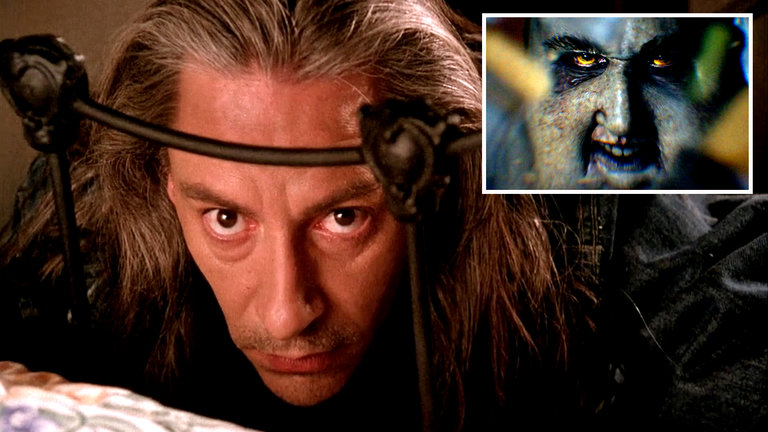
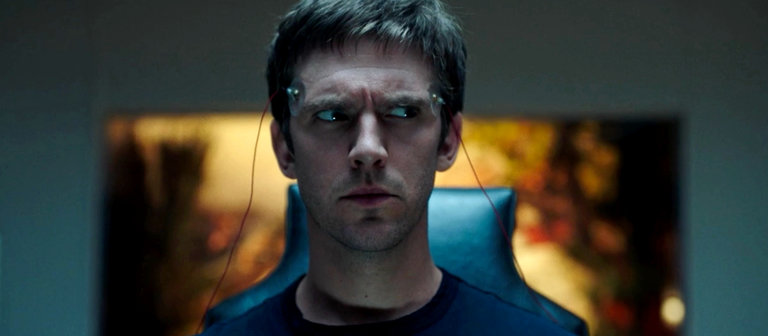
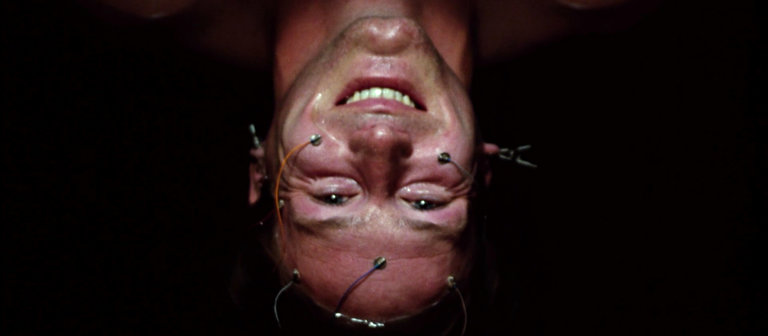
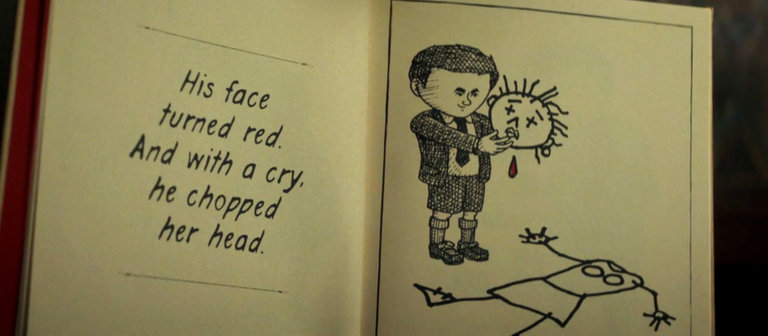
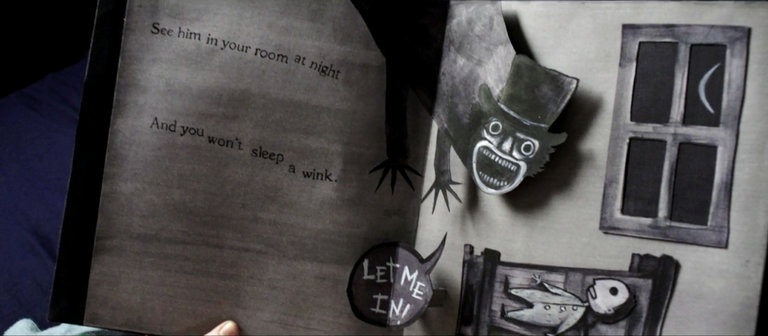
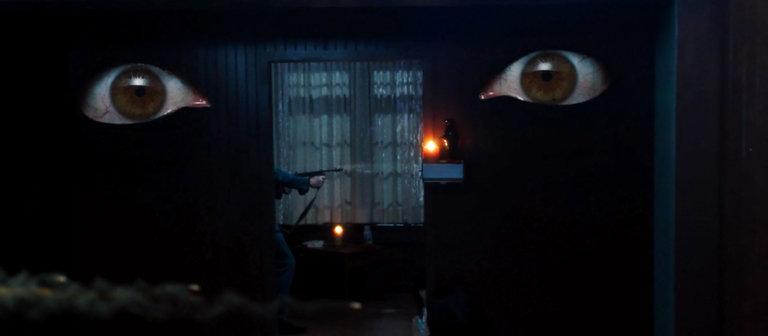
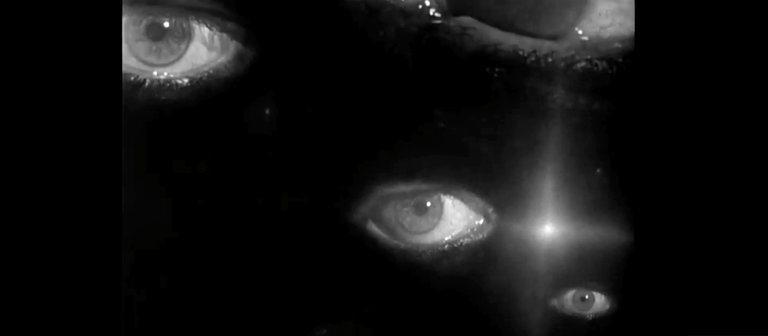
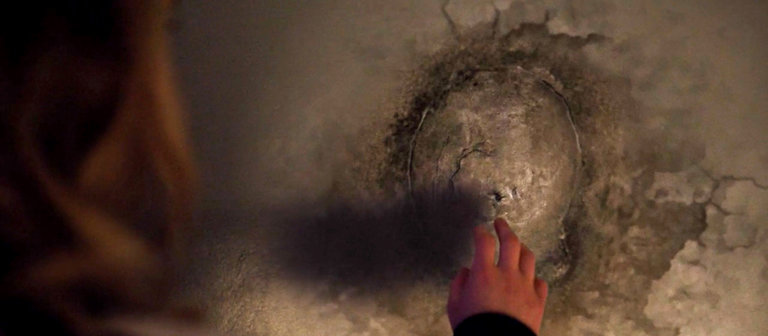
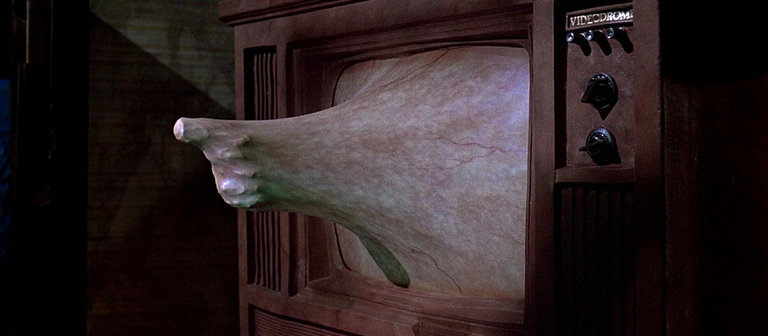
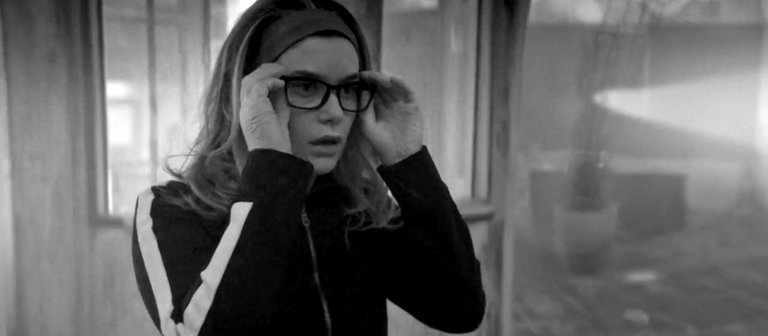
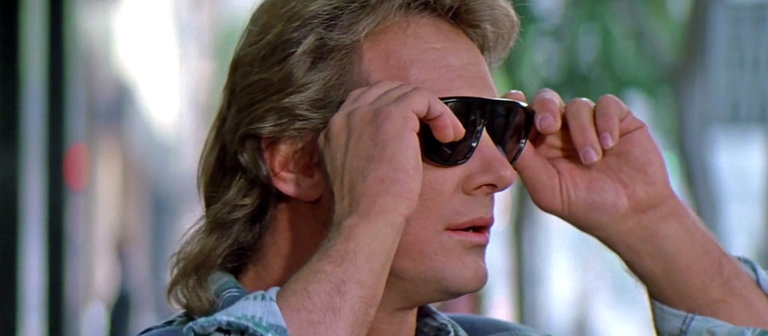
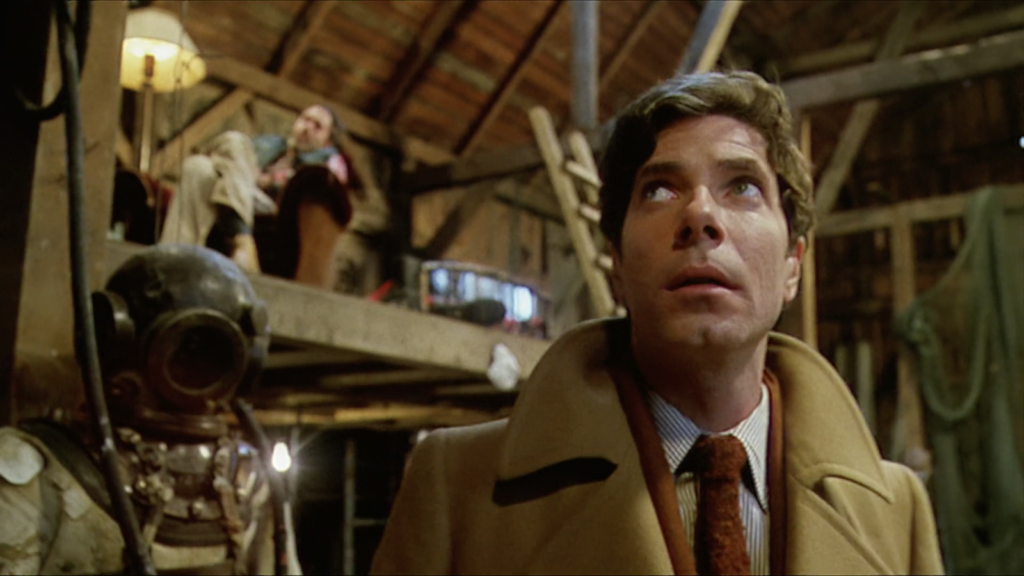
While Lynch gets the “Legion”-related headlines, another director named David seems to have left an even deeper mark. That would be David Cronenberg, who made a name for himself with a series of body-horror films that depicted the disturbing interplay between mind and matter, often with a conspiratorial backdrop of sinister secret agencies or killer corporations out to harness psychic power for their own ends.
“Legion” paints in shades of Cronenberg’s “Videodrome,” with its pulsating inanimate objects; “Shivers,” with its parasite imagery; “The Brood,” with its story of a powerful telepath under the care of a manipulative therapist (played by Oliver Reed, who may have lent both his name and his machismo to the guru figure Oliver Bird); and most especially “Scanners,” with its all-out war between rival psychic factions and a protagonist who’s telepathically tormented by the voices in his head. (“Scanners” also features a blink-and-you’ll-miss-it appearance from a very familiar-looking deep sea diver suit).
I wrote about David Cronenberg, David Lynch, and Legion’s other major horror influences for the New York Times. I have my beefs with Legion, but it’s porting its horror references into a whole different genre, as opposed to Stranger Things, which is just reheating them in the microwave and trying to pass of leftovers as a fresh-cooked dish.
This Valentine’s Day, Watch ‘The Love Witch’
February 14, 2017But the most romantic thing about The Love Witch is the existence of the film itself. To call a work of art “a labor of love” is to imply a sort of jejune passion, an amateur’s enthusiasm, but nothing could be further from the case here. Taking the concept of the auteur to a whole new level, Anna Biller not only wrote, edited, scored, produced, and directed this movie — she also served as the production designer, the set decorator, the art director, and the costume designer. She personally built, knit, sewed, collected, or otherwise provided many of the film’s key props, from the witches’ altar to the characters’ jewelry to a rug that took her months to make. If the lengthy and thoughtful essays and interviews on her blog are any indication, she also served as the movie’s on-set philosopher. Short of starring in the movie herself, there’s no way The Love Witch could be more Anna Biller’s vision.
The result is unmistakably familiar. To watch The Love Witch is to enter the headspace and heartspace of another human being as surely as falling in love.
This becomes crystal clear barely five minutes into the film. After an opening driving sequence that’s a loving homage to similar scenes in Hitchock’s Psycho and The Birds, we enter the Billerverse in earnest — a world where every detail is deliberate and delightful. Tucking her cherry-red cigarette case into her cherry-red purse, Elaine emerges from her cherry-red car in her cherry-red dress, then takes her cherry-red suitcase out of the cherry-red trunk to enter an apartment full of occult artwork so colorful it’d make a Crayola 64-pack blush. Next, we’re off to a sumptuously appointed tea room in which every one of the all-female clientele is clad in cotton-candy pink; the matching floral-patterned tea set, hand selected by Biller herself, looks like something made of marzipan in the sugar-spun home of a fairy-tale cannibal witch.
By the time I hit this point in the movie, I was laughing out loud in sheer joyful admiration. Whether working in true independent form like Biller or blessed with the carte blanche freedom afforded to established and acclaimed names like Scorsese, Anderson, Tarantino, or Coen, few filmmakers have anything close to this level of confidence in their own taste and vision. Pulling this off for a single scene would be reason to celebrate. Constructing an entire film from a single intelligent, idiosyncratic worldview is close to a miracle. And from its first scene to its last, from the font choice in its opening titles to the music over the closing credits, that kind of miracle is exactly what The Love Witch delivers. Watch it with some witch you love.
The Boiled Leather Audio Hour Episode 58!
January 27, 2017Rogue One: A Star Wars Podcast
Rebellions are built on hope, and this episode of the Boiled Leather Audio Hour is built on Rogue One: A Star Wars Story! Stefan and Sean continue their exploration of that galaxy far, far away with a look at Gareth Edwards’s stand-alone contribution to the Star Wars cinematic universe. How does it stack up against The Force Awakens? What’s the impact of its countless cameos and Easter eggs on the one hand and its unprecedented-for-the-franchise story structure on the other? How do we feel about Edwards’s handling of action, character, setting, performance, and the all important “toyetic” factor? Hit play and find out!
And remember, if you like what you hear, subscribe to our Patreon to hear more of it via our subscriber-exclusive Boiled Leather Audio Moment mini-podcast!
Our BLAH episode on the prequel trilogy.
Our BLAH episode on The Force Awakens.
Sean’s article comparing Rogue One to TFA for Rolling Stone.
Sean’s list of the 57 Greatest Star Wars moments for Vulture.
Our Patreon page at patreon.com/boiledleatheraudiohour.
Our PayPal donation page (also accessible via boiledleather.com).
Artcrime: What “Beware the Slenderman” Says About Blaming Artists for Violence
January 25, 2017There is no artist behind Slender Man, not in the panoptic, memetic form in which Morgan and Anissa encountered him. Slender Man’s “author” is the internet and the army of artists and writers and filmmakers and game designers who inhabit it. Only the accident of history, in which the original posts can be tracked down, enables us to put names to the faceless being at all. A few decades ago Slender Man would just be Bloody Mary or the killer with a hook for a hand who disrupts teenagers necking in their cars. A few centuries ago and he’d be the vampire a town feared enough to dig up graves and behead the corpses inside, or the witch who lures wayward children to their doom. With no artist in play, it becomes clear how fallacious it is to pin the blame on artists for the actions of disturbed individuals who consumed their art at all.
This is not to say art never affects society or inspires terrible things. When Jared Kushner crows about targeting ads for his odious father-in-law Donald Trump’s presidential campaign to viewers of The Walking Dead because of their concerns about immigration, he’s recognizing the fascist ideology that underlies both the show and the current administration. But art with an ideological vector connects the reader or viewer to a cohesive worldview, which, right or wrong, helps explain society and prescribe remedies for its ills. Action and reaction are to be expected.
That’s different from a movie about a pair of abused kids who become mass murderers and media superstars, or music by a glam-influenced Satanist, or creepy internet posts about a demon with no face. These merely provide monsters who embody fears and desires, not a political program. Those monsters will always exist in one form or another, and disturbed kids like Morgan and Anissa will always find them and use them as the mold into which they pour their crumbling sanity or mounting bloodlust. In blaming the art or the artist, we commit the exact same error, looking for a boogeyman to help us explain the inexplicable. We’re finding our own Slender Man to serve.
STC on the Radio Revisited
January 7, 2017Listen to me talk about the Golden Globes on On The Town with Michael Riedel this morning! My segment starts around the 44-minute mark.
STC on the Radio
January 6, 2017I’ll be talking about the Golden Globes with theater critic Michael Riedel on his On the Town radio show tomorrow morning at 9am on 970AM in the New York area. The show will be posted here shortly thereafter. Enjoy!
They Lie About ‘They Live’: John Carpenter and the Neo-Nazi Quagmire
January 4, 2017My heart goes out to John Carpenter, a thoughtful, talented, humane artist whose contributions to our culture dwarf those of every single one of these wannabe Goebbelses combined. I can’t imagine how infuriating it must be to see your art—let alone a work of outright anti-capitalist agitprop like They Live—twisted into its ideological opposite by bigots and charlatans. I’d almost certainly have spoken out, too.
But I’m not convinced it will do any good. I’m not convinced it won’t outright hurt, in fact. Like Hillary Clinton’s “alt-right” speech during the campaign, this has now elevated the neo-Nazi smears and lies into the realm of debatable topics, the stuff of “meet the dashing new face of the extreme right” puff pieces.
“They Live is about International Jewry” is something that had never occurred to non-piece-of-shit people before this week. Now it’s a sick, sad footnote in the film’s history, a slug in its Wikipedia entry, a scratch on the lens of the sunglasses that help us see reality for what it is. That’s the goal of the racists and fascists, after all: Distort our vision until everything is as ugly as they are.
